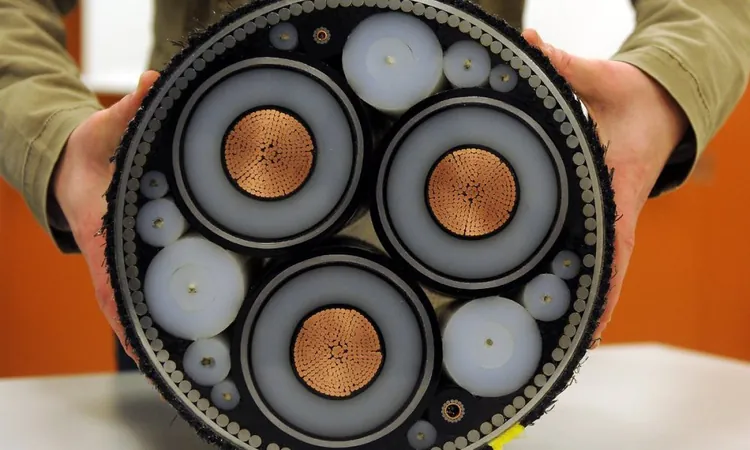
Groundbreaking Discovery: NUS Unveils Copper-Free Superconductor Material for High-Temperature Applications!
2025-04-02
Author: Jia
Superconductivity: The Power Behind Modern Technology
Superconductivity is a phenomenon in which electrical resistance disappears completely, allowing electric currents to flow without any energy loss. Until recently, achieving superconductivity required extremely low temperatures, making the technology impractical for widespread use. The discovery of high-temperature superconductors made from copper oxides in the late 1980s brought a breakthrough; however, the reliance on copper has limited the search for alternative superconductive materials.
A New Era of Copper-Free Superconductors
NUS has now taken a giant leap forward by introducing a new theoretical model that led to the synthesis of a non-copper-based superconducting material called samarium-europium-calcium-nickel oxide (Sm-Eu-Ca)NiO2. With this material exhibiting superconductivity at temperatures exceeding 30 K at ambient pressure, researchers believe it could pave the way for the next generation of superconductors.
According to Dr. Stephen Lin Er Chow, one of the lead researchers at NUS, “This non-copper-based superconducting oxide demonstrates high-temperature superconductivity under atmospheric pressure at sea level, without the need for additional compression—just like copper oxides.” This extraction not only showcases the potential for broader categories of superconductivity but also increases accessibility due to its stability under normal conditions.
Prof. Ariando, another member of the research team, emphasized the significance of their findings, noting, “This is the first time since the Nobel-winning discovery that a copper-free high-temperature superconducting oxide has been found to function under ambient pressure, enhancing its accessibility for real-world applications.”
Why This Discovery Matters
This newfound material's stability under standard atmospheric conditions opens doors for large-scale production and application. Its potential extends far beyond conventional superconductors, especially if manipulated to achieve even higher operational temperatures—potentially around the temperature of liquid nitrogen, which is cost-effective and widely available.
Imagine a future where power transmission is efficient, energy storage is maximized, and advances in various fields, including space exploration and transportation, can be achieved without the heavy reliance on rare materials such as copper!
The researchers' robust synthesis method further eliminates structural defects, increasing the material's practical applications. Their findings stir excitement within the scientific community, hinting that copper-free superconductors could redefine the capabilities of modern electronics.
Looking Ahead
The future of superconductivity seems brighter than ever. As researchers refine their theoretical frameworks and seek to fine-tune the parameters of superconducting materials, we may be on the brink of an era where superconductivity is not just a scientific curiosity but a mainstream solution for everyday technological needs.
With companies like American Superconductor Corporation (AMSC) leading the charge in implementing superconducting technology in various applications, this new breakthrough from NUS could herald an unprecedented transformation across industries, ultimately changing how we produce, store, and consume energy.
Stay tuned as we continue to witness how this exciting discovery unravels the mysteries of superconductivity and what it could mean for the future of technology and energy solutions!



 Brasil (PT)
Brasil (PT)
 Canada (EN)
Canada (EN)
 Chile (ES)
Chile (ES)
 Česko (CS)
Česko (CS)
 대한민국 (KO)
대한민국 (KO)
 España (ES)
España (ES)
 France (FR)
France (FR)
 Hong Kong (EN)
Hong Kong (EN)
 Italia (IT)
Italia (IT)
 日本 (JA)
日本 (JA)
 Magyarország (HU)
Magyarország (HU)
 Norge (NO)
Norge (NO)
 Polska (PL)
Polska (PL)
 Schweiz (DE)
Schweiz (DE)
 Singapore (EN)
Singapore (EN)
 Sverige (SV)
Sverige (SV)
 Suomi (FI)
Suomi (FI)
 Türkiye (TR)
Türkiye (TR)
 الإمارات العربية المتحدة (AR)
الإمارات العربية المتحدة (AR)